
Moving to Los Angeles: Tips for Life in LA
Mar 31, 2023 / Alyssa Duranty
LA is a world all its own, and it’s pretty beaches, amazing nightlife and all-round fun vibe keep convincing people that moving to Los Angeles is totally worth it.
If you’re thinking of heading to the home of Hollywood and you’re expecting a city you’ve seen on TV, you’ll probably be confused and a little disappointed. It’s not wall-to-wall movie stars and swimming pools. In many ways, LA is like any factory town; it just happens to make movies, rockets and mansions.
You’ll also find friendly Angelenos who are super-busy chasing after a dream, working a day job and raising a family. No matter what’s drawing you to the City of Angels, keep reading to find out why some celebrities and mostly average Joe’s love living in the sunny, and sometimes seaside, city.
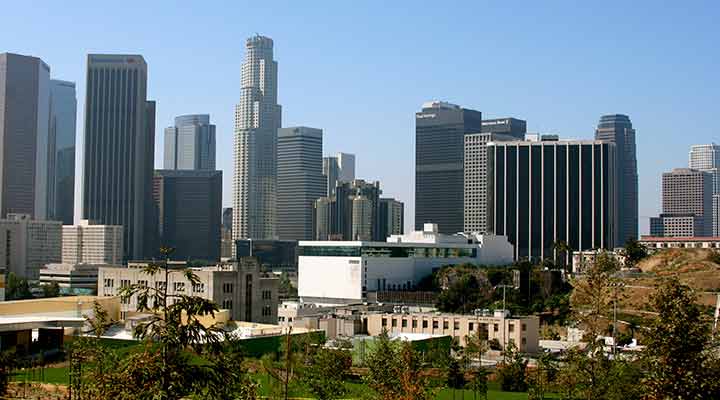
Image by Channone Arif
Moving to LA: Some Basics
If you’ve never lived in Los Angeles, or somewhere in nearby Southern California, the city can seem overwhelming. LA proper is huge, and LA County is ever bigger. So here’s a few basics to help you understand the city.
How Big Is Los Angeles?
Los Angeles is big. The city limits cover 503 square miles. The metro area spreads far beyond that in a patchwork of streets, skyscrapers, homes and freeways that stretches from San Bernardino in the east to the Pacific Ocean in the west. All told, the LA metro area adds up to a mind-blowing 33,954 square miles that more than 18 million people call home.
Los Angeles Culture: The People of LA
Virtually everyone in Los Angeles is an immigrant. Starting with the Spanish, who founded the pueblo of Los Angeles in 1781, the city has grown and thrived because wave after wave of immigrants settled there to make new lives.
Los Angeles is the world’s mixing bowl and melting pot. There are 140 languages in use, every day. You’ll find people, cultures and cuisine from 180 nations within a 60-mile radius of city hall. If difference and diversity are what you crave, LA is the town for you.
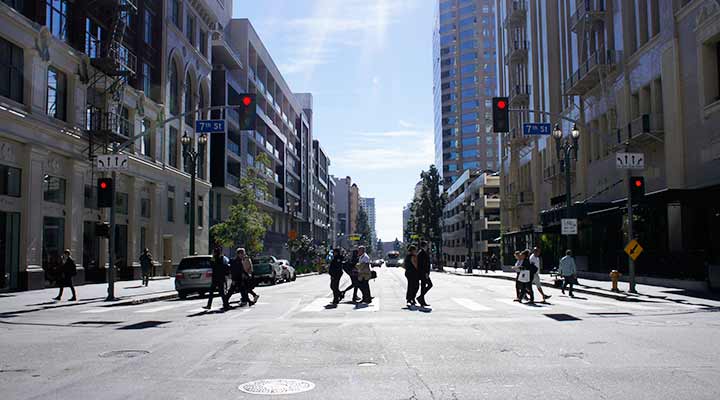
Image by vanderhe1
Working in Los Angeles
Be prepared to work hard in Hollywood, the Port of LA, Silicon Beach, a food truck — it doesn’t matter what industry or occupation you’re dreaming of. If you want to do it in LA, you have to bring your A game every day. People come to Los Angeles from all over the world, many of them with nothing, to make things happen. Refugees from Vietnam, Iran and Ethiopia have come here, built businesses, raised families and reinvented neighborhoods. If they can make it work, so can you.
There’s More Than Hollywood Jobs in LA
Odds are, you’re going to want a job when you get to LA. Most people think Los Angeles runs on Hollywood and entertainment, and for good reason. The industry has a global cultural impact and it does a pretty good job of promoting itself. LA’s creative economy — filmmaking, theater, art, museums, fashion, design and advertising — contributes about a third of the region’s $700 billion GDP. What generates the other $460 billion?
Trade Jobs in Los Angeles
The combined ports of LA and Long Beach are the busiest in the nation and among the top 10 busiest in the world. The Alameda rail corridor that connects the ports with inland yards is the highest-volume freight line in the country. Jobs in the port run from dock work and welding to the boardroom.
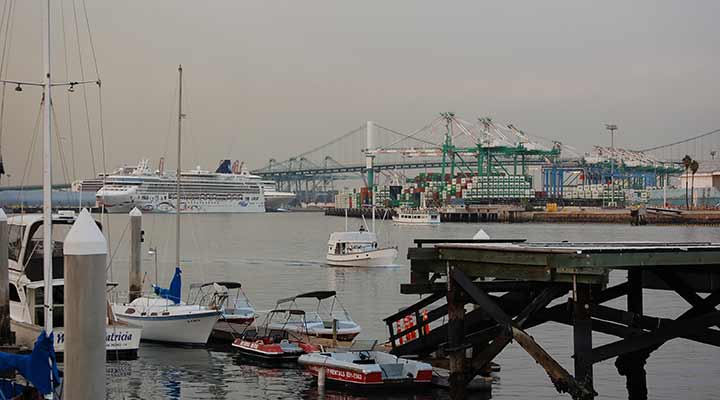
Image by Matthew Dillon
Los Angeles Jobs in Aeronautics and Defense
SpaceX designs and builds its rockets in Hawthorne. Boeing and Northrup Grumman build satellites, missiles and things we’re not allowed to talk about in El Segundo. Aeronautics doesn’t employ as many people as it did 40 years ago, but it’s still a major force.
Tourism Jobs are Plentiful for New Angelenos
In 2016, 47.3 million visitors dropped $21.9 billion into the Los Angeles economy. There are more than 500,000 hospitality jobs in Los Angeles, many of which are ideal for a new transplant, especially if you speak a second, or third, language.
Finding Los Angeles Bio-Tech Jobs
UCLA Medical Center, USC Keck School of Medicine, City of Hope Cancer Research Center — LA’s public and private health care providers, researchers, and manufacturers employ more than 700,000 people in the region.
Getting a Job at LA Colleges
The label “world-class”; doesn’t do the schools of LA justice. UCLA, USC, Loyola Marymount, Pepperdine, Cal Tech, Cal State LA, Northridge and Long Beach, the Pomona colleges, UC Riverside — whether you’re a student, professor or researcher, the colleges and universities in Los Angeles are difficult to match.
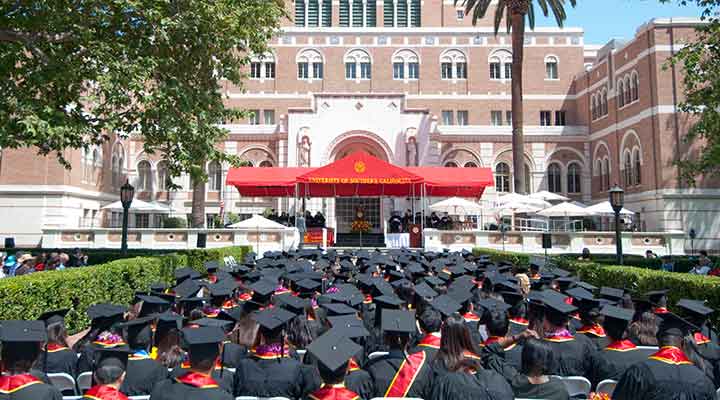
Image by Ben Chun
Tech Jobs in Silicion Beach
In the past 10 years, technology firms have been coming south and teaming up with the creative industries that historically served Hollywood and entertainment. The Silicon Beach communities of Santa Monica, Venice and Playa Vista (anchored by YouTube and Google) are sizzling. Across the 405 Freeway is Culver City, and Amazon is making movies and TV shows in the 100-year-old studios that made “Gone With the Wind.”;
Affordable Housing in LA is Hard to Find
Renting in Los Angeles is expensive. Unless you’re moving from New York or another West Coast city, you’ll likely pay at least twice what you’re paying on housing now. Home prices will look like they have one too many zeros — sometimes two zeros too many. Finding a place you can afford that isn’t an hour from work is going to be a challenge.
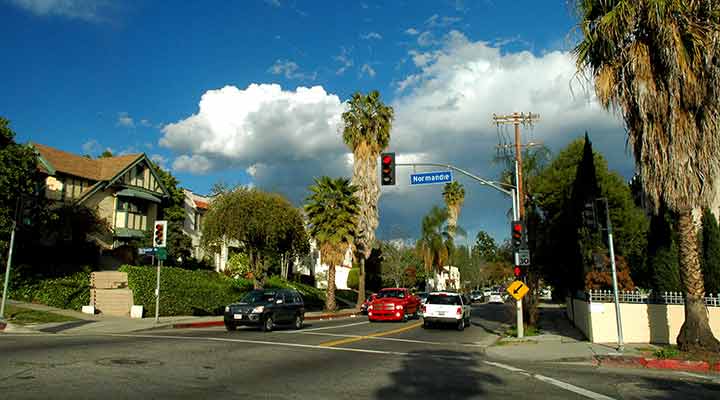
Image by Clinton Steeds
Our advice? Rent near work or school in the short term, and explore the city. There is much to see and learn before you sign any leases.
Driving in Los Angeles: Keep Your Car
Rent prices close to city centers and train stops in LA are significantly higher than those in areas just a few miles away, which makes a car an economically valuable asset. Unlike in other cities, many apartments come with parking spots and street parking can be relatively easy (see the section on parking below, for details).
People, events, museums, shows — everything in LA is spread out and you will need a car to avoid costly Uber or Lyft rides (few people still take taxis in this city). In some neighborhoods, you have to drive just to go for a good, solid walk. Try to minimize your commute and take the Metro train if you can, but keep a car on hand. You’ll be able to explore the city and escape to the deserts or mountains whenever you want.
Los Angeles Traffic Is the Worst, Literally
Traffic in LA is very, very bad in every direction for most of the day. Stock up on podcasts and always have water and snacks in the car because you’re going to be in there awhile. A 15-mile drive that would take 20 minutes in any other city will likely take 45 minutes to an hour. Here are some basic coping strategies for LA traffic.• Don’t drive if you don’t have to: Walk, bike, take the Metro or work remotely.
• Carpool: Many office complexes and businesses provide perks for carpoolers.
• Go to work early: Many businesses support and encourage people to start their day earlier or later to avoid traffic.
• Avoid the freeways: 3 p.m. to 7 p.m. is the worst time to take an LA freeway.
• Use Waze or Google maps: Peer-to-peer Waze (which powers Google’s traffic) gives you an accurate read and can help you find alternate routes. Warning: The side-street routes that used to be faster are mostly clogged thanks to Wazers, so detour with caution.
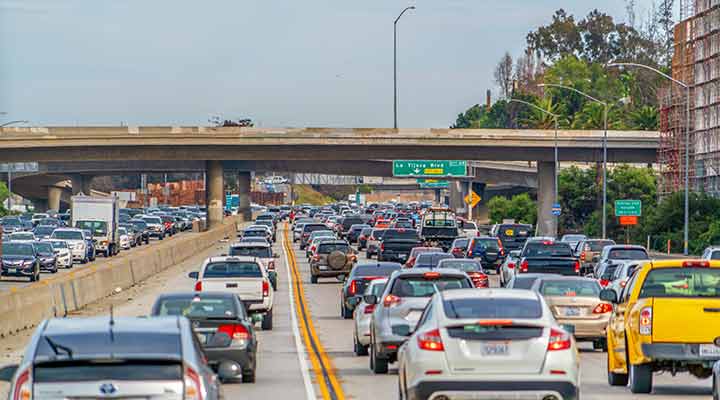
Image by Jeff Turner
Public Transportation Options
It’s not easy, but it is possible to make it without a car in Los Angeles. Now that the Metro Expo Line connects Downtown with Culver City and Santa Monica, you can commute to the Westside and the beach by rail. The Metro is busy laying track and boring tunnels all over town, so things are only going to get better. Uber, Lyft, scooter and bike-sharing apps can get you where the trains and buses don’t go.

Image by David Guo
California Lingo: Why Do Angelenos Say “the”; Instead of “Interstate?”;
Angelenos almost never say “interstate,”; “route”; or “highway.”; A highway that most of the country would call “Interstate 5”; or “I-5”; is called “the 5”; in Los Angeles. This goes for almost every major roadway including the 101, the 405 and the 710. Most theories point to the fact that Los Angeles was the birthplace of freeways. Early on, they were named after places: the Arroyo Seco Parkway (1933), the Hollywood Freeway (1940), the Ventura Freeway (1960). As the Interstate Highway System started numbering things, the convention stuck.
Street Parking in Los Angeles Can Be Tricky
Street parking in LA isn’t as challenging as in Boston or New York, but it is far more confusing. Cities all around LA County create complicated parking rules and explain them with baffling, often contradictory, signs stacked one above another. You can’t just read them; you have to study them. If you don’t, you risk a $60 (or more) ticket.
Things to Do in LA
Since Los Angeles is so big, there’s always something to do. There’s something for everyone, whether you love to surf great waves, eat fancy foods, listen to live music or visit new art exhibits.
Yoga Pants Aren’t Just for the Gym in LA
The traffic, cars and pace of life in LA can wear you out. Angelenos have invented quite a few tricks for keeping healthy and sane. Once you’re there, you’ll see a large number of people rocking athleisure wear at local cafes, grocery stores and dog parks. Getting fit is more than an activity in Los Angeles; it’s a lifestyle.
Every day, farmer’s markets pop up all over the city with fresh-picked foods from area farms. Get there early. Area chefs and local cooks snatch up the best seasonal stuff fast. If you don’t have one nearby, the Original Farmer’s Market at Fairfax and 3rd has been serving up fresh produce, meats and a seriously cool vibe since 1934.
Head up to Runyon Canyon and hike with the movie stars. Or climb the stairs in Santa Monica or Baldwin Hills. Join a yoga session in Griffith Park before trekking up to the Hollywood sign. Run the beaches or the Backbone Trail above Malibu. Skate or shoot hoops in Venice. The weather is typically perfect in Los Angeles, and half the city is already out there working up a sweat.
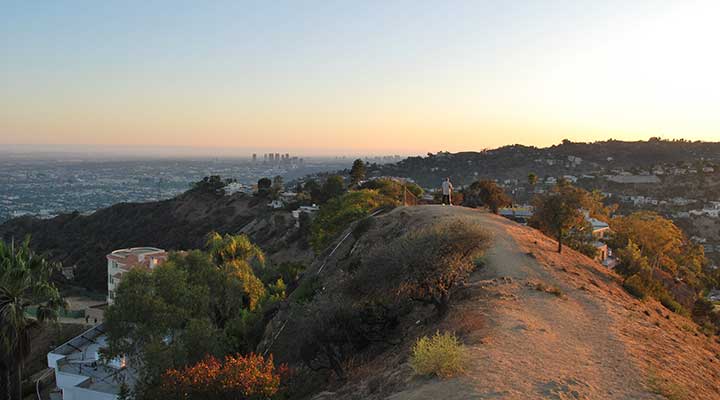
Image by Ben Godfrey
Where to Eat in Los Angeles
Los Angeles cuisine is available at all price points in every part of town. Santa Monica, Beverly Hills, West Hollywood and Downtown are home to some of the finest food and drink there is. Food trucks serve up sushi, BBQ, gourmet burgers and — seriously — half a dozen kinds of grilled cheese. But this city is known for some of the best Mexican food in the world, and at really great prices. Don’t forget to stop by Olvera Street for some hometown favorites or find a taco truck parked along Sunset Boulevard.
Discover Los Angeles Like a Tourist
You’ll probably want to venture down Hollywood Boulevard and ride the Ferris wheel at the Santa Monica Pier as soon as you arrive in LA, but Los Angeles also has a funky, deeply weird, nowhere-else-but-LA side that you should explore. The Watts Towers, Museum of Jurassic Technology and the Last Bookstore are good places to start. Book an Esotouric bus tour to learn about some of the mysterious and darker sides of Los Angeles.
Day Trips from Los Angeles
Los Angeles is easy to escape. Mountains and wilderness surround the town. In 45 minutes, even with traffic, you can be in the Santa Monica or San Gabriel mountains, where mountain lions and coyotes still rule.
In the winter, snow and skiing are a couple of hours away in Wrightwood and Big Bear. In five or so hours, you can be in Yosemite, Sequoia, Kings Canyon, Mammoth or Death Valley. So get out there and breathe. It’s one of the best perks of living in Los Angeles.
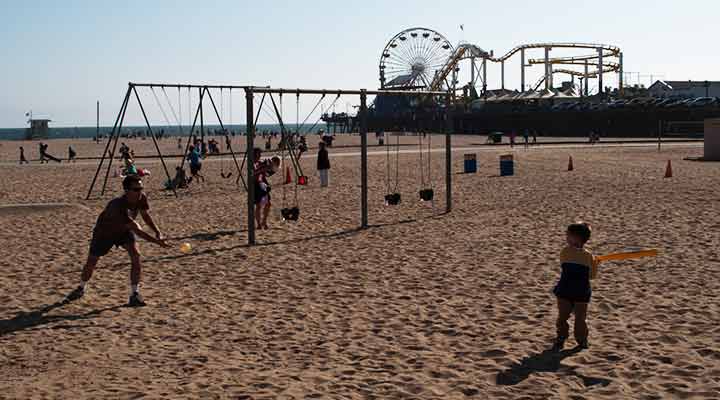
Image by InSapphoWe Trust
The Next Big Earthquake in Los Angeles
Earthquakes are definitely a thing in Los Angeles. Small ones feel like a parking garage shaking as a car drives by. Moderate ones can freak you out, but they don’t typically do a lot of damage. Large ones, like the Northridge quake in 1994, destroy communities in seconds.
The Big One, which seismologists think is overdue, could level buildings and cut off the region’s water and power. Don’t panic! Being prepared is the best way to cope with earthquake anxiety and survive. Visit The Red Cross, Be Prepared California and Ready LA for complete and current earthquake preparedness tips.






